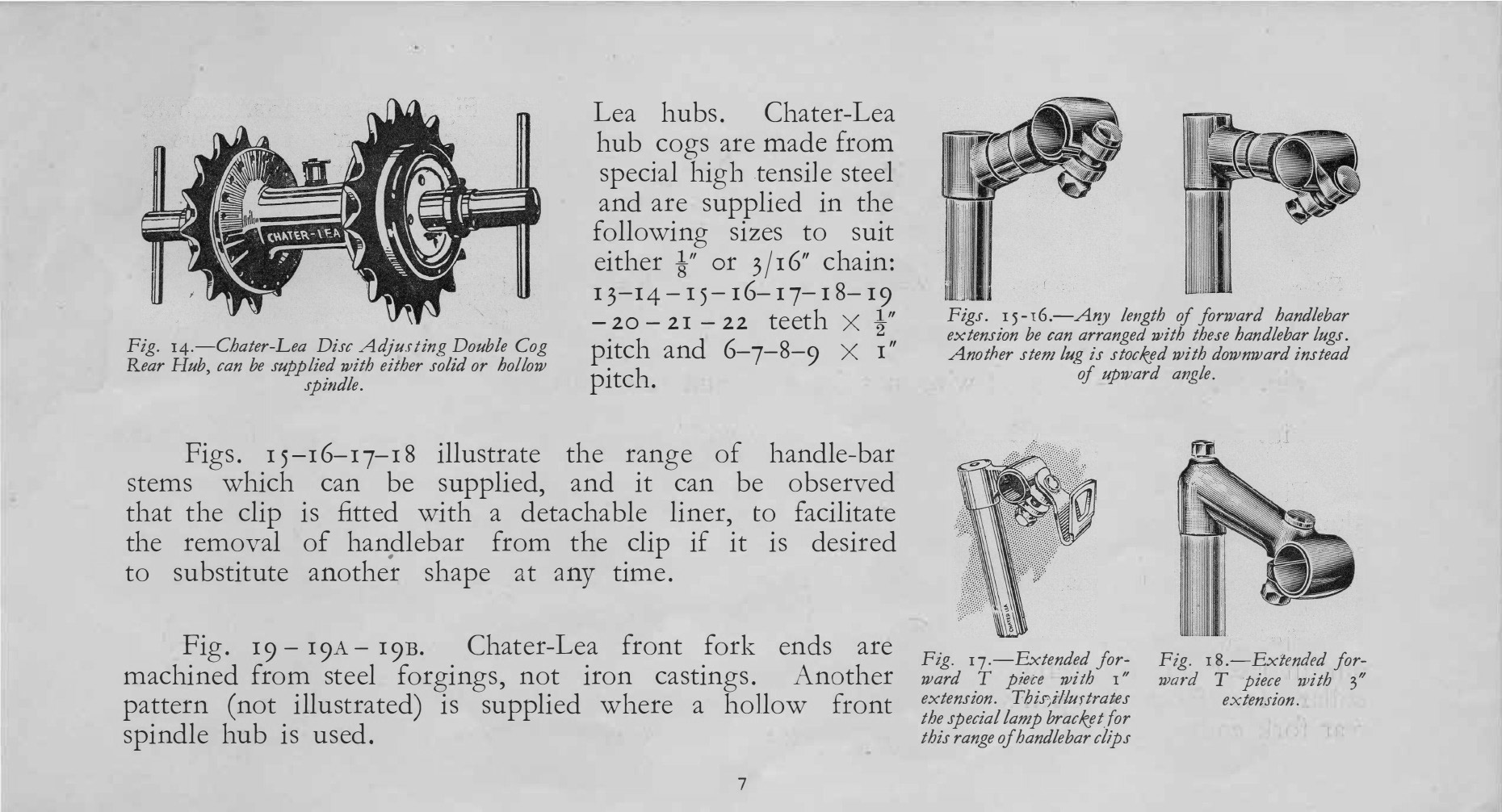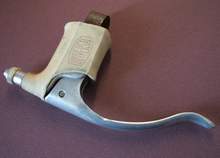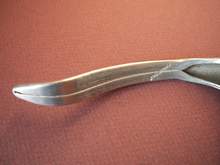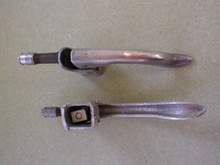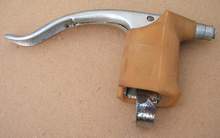Universal brakes
Posted: Sunday 14th June 2020
Universal are holding an exhibition in Milan this year to celebrate the 100th anniversary of the Universal brake, see details posted at bottom of these pages:
Until recently, I only had a vague idea about the chronology and differences between the models of this brand of brake made by Fratelli Pietra Società Collettiva of Milan from the 1920s until the 1980s. Most fans of lightweight bikes of the 1950s would easily recognise the model type 51 that was standard equipment on Italian bikes of the period but perhaps know little about the different models available let alone their nuances. It must be stated from the outset that the observations that follow are based on a small number of examples acquired by the writer and the website controller, coupled with a limited amount of research, and is confined to the models available to cyclists in the UK.
Chuck Schmidt, the American lightweight enthusiast and Campagnolo guru, has proposed a chronology of models from the classic period that is published on the ‘Classic Rendezvous’ website as follows:
- Model. 35 – 1935 (side pull)
- Model. 39 – 1939 (side pull)
- Model. 50 – 1950 (side pull)
- Model. 51 – 1951 (side pull)
- Model. 61 – 1961 (centre pull)
- Model. 68 – 1968 (side pull)
It will be noticed that each model number corresponds with the date of introduction. However, it is clear that Universal made a great many types of brake for all manner of bicycles and that the ones listed above represent the top echelon, although at least two less prestigious racing models, the ‘Sport’ and the ‘Mignon’, also made an appearance in Britain. Conversely, the type 50 may never have reached these shores in any meaningful way. This is because the type 51 as the top model quickly superseded it at a time when Britons finally got an opportunity to purchase Universal brakes in the early 1950s.
I have little knowledge of the model 35, although Freddie Grubb was responsible for importing Universal brakes as early as 1933 and they were described as having alloy stirrups. There is no evidence of Universal brakes being used as standard equipment in the last catalogue to be published by Grubb around 1951 just before Holdsworthy took over the marque, with brakes by San Giorgio being the more familiar Italian fare. It is very difficult sometimes to distinguish the models by the levers, which straddled the various brake types. It was also possible to buy the Type 51 levers separately so that individuals could upgrade accordingly.
This lever with slight alterations was also used on subsequent models until the introduction of the CX and Model Type 77 in the late 1970s. To add to the complications, callipers of several models were produced in different lengths but how common these were outside the standard brakesets is debatable. However, the information in Emilio Bozzi catalogue of 1950 and the Universal catalogue from the mid to late 50s do help.
Adverts in cycling magazines by APC Bowles and Holdsworthy added to their ‘Cycling Aids ’ catalogues help to fill in the gaps from a British perspective. The former were the importers until the early 1960s.
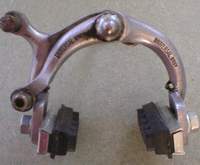
Model 39– I have an example of a lever and calliper, which is described as ‘lusso’ in the Universal catalogue. Both components are stamped ‘UNIVERSAL’ with the ‘brev’ number 361666. This appears in full on both sides of the pivot bolt on the stirrup of the calliper. The calliper has a wrap around return spring. The front calliper is shorter that the rear but a very short front calliper was also available stamped simply ‘UNIVERSAL BREV’ on front stirrup both sides of the pivot bolt.
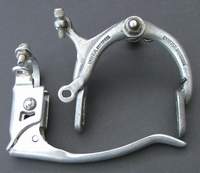
Photographs of Fausto Coppi on his Bianchi set up for Simplex gears for his victory in the 1949 Tour de France appear to show this brake that has no QR mechanism and a lever that incorporates a fixing clamp as part of the main body of the lever, requiring a left and right hand casting. The body could be made of steel or alloy. This model was imported by APC Bowles along with the Mignon and model 51 from the early to mid 50s but was dropped from lists by the end of the decade. It cost 37/6 in 1955.
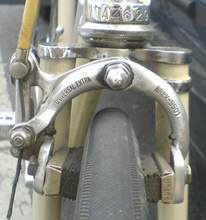
Model 50 – identified in Universal’s 1950s catalogue simply by its lever that has a ‘half hood’ like the Mafac. It is similar to the model 51 in that the body has the raised pillar carrying the adjuster but I think can be distinguished from the 51 by the engraved ‘Universal’ logo on the sides of the body. To add to the confusion it was also supplied in version without the raised pillar. Coppi appears to be using this simple version when he won the Paris-Roubaix in 1950 and preferred to wrap tape around them. The calliper was probably identical to the model 51 in general terms as suggested in the 1950 Bozzi catalogue where the callipers are stamped ‘BREV 5501’.
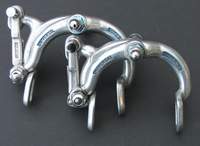
Model 51 – has a shallow front calliper and long standard rear, incorporating the new sliding arm QR mechanism. The earliest models have wrap around return springs as previous models. The callipers are stamped ‘UNIVERSAL EXTRA’ on one side and ‘BREV. 453949’ on the other side of the pivot bolt. Later examples have springs restrained on pegs at the back of the callipers. These have ‘BREV 453949’ stamped on the QR mechanism and probably occur from the 1960s onwards. (This feature also appears on the ‘Super 68’ model). Early QR mechanisms are plain or stamped ‘MADE IN ITALY’.
The earliest levers probably had pointed ends to the castings and were crimped like the model 39. Shortly after the levers become fatter and have completely open backs. The third group with pointed ends are strengthened with the casting folded round at the back where it hinges to the body. They also feature a full rubber hood. Essentially the same lever was used later on the models 61 and super 68. However, most levers seem to just taper off at the ends but these may also stem from the 1960s onwards because the 1950s catalogue shows only the pointed versions.
Strangely, there is a photograph of Fiorenzo Magni, having broken his collarbone, riding in the 1952 Giro with similar tapered levers but these may be MAFACs used in cobnjunction with the 51 calliper. The threaded cable adjustment pillars on the body of the levers have their own protective conical rubber covers on later examples. The early versions have an adjuster with raised knurled sides, made of rubber that is too fat to receive such a cover.
A famous photograph of Coppi riding to victory in the 1953 World Championship road race at Lugano shows this type of lever with the fatter section and pointed ends. Rubber hoods are generally brown coloured or translucent with the word ‘UNIVERSAL’ moulded into the sides (sometimes painted), but they also came in white and these are now very rare. Early conical covers are thought to be brown, whilst later ones are coloured black. This model that retained its long rear calliper continued to be favoured by top Italian riders such as Felice Gimondi as late as 1967. The brake set cost 47/6 in 1955 and remained in the Holdsworthy catalogues until at least 1976.
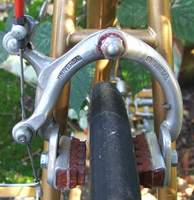
The Sport Model – is not listed in APC Bowles adverts from the 1950s but it does appear in the Universal catalogue. They are stamped ‘UNIVERSAL’ on the calliper both sides of the pivot bolt, have wrap around return springs and no QR mechanisms in early versions. A Rebour drawing from a page in a 1952 ‘Le Cyclist’ shows a very similar brake, which they call the ‘course junior’. The lever is very similar to the type 50 without the pillar adjuster. The ‘Sport’ brake is listed along side models 51 and 61 in Holdsworthy advertisements and in ‘Cycling Aids’ from the early 1960s but it is clear that by then they have gained a simple QR mechanism attached to the cable stop on back section of the stirrup. It is not listed in the 1975 catalogue.
The Mignon Model was the cheapest model on Bowles list at 32 shillings and probably came with a lever engraved at the sides but no adjusting pillar. The callipers were different lengths like other models and engraved with ‘UNIVERSAL MIGNON’ on the left side of the pivot bolt according to the Universal catalogue. It also had a wrap around return spring (see technical page on the Mignon below)
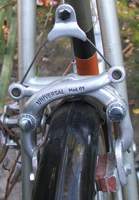
Model 61 – This is Universal’s only centre pull model, introduced to rival ones made popular by Mafac. The callipers are shorter in reach than Mafac ones and the front is shorter than the rear. It incorporates a QR system in the cable stop attached to the head set and a corresponding one is attached to the seat pillar binder bolt at the rear. The return springs are retained on pegs as part of the casting at the back of the calliper. The levers are principally the same as the previous models with a full rubber hood but early models will have pointed ends to the levers. Pro riders like Charly Gaul riding for Fiorelli are seen with these in the 1961 Tour de France. However, their success was suspect, with many continental pro riders preferring the Mafac racer calliper accompanied by Universal levers. It appears in the Holdsworthy catalogues until at least 1976. By this period both callipers were probably equally short to cater for changes in frame design.
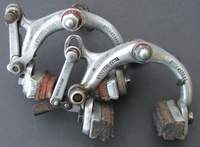
Model 68 – The shape of the calliper is altered to emulate the new Campagnolo model but lack their style and finish but called the ‘time trialist’s favourite’ in the 1975 catalogue. The front calliper is still shorter than the rear but were supplied with shallow or deep stirrups and even versions anodised in black. The return springs are retained on pegs at the back of the stirrups as part of the casting. The front of the stirrups is stamped ‘UNIVERSAL’ on the left side of the pivot bolt and ‘SUPER 68’on the other. The levers have an open back and gently tapers off at the ends. They were supplied with ‘translucent’ rubber hoods or white and have black conical covers to the adjusters. They are absent from the 1967/8 Holdsworthy catalogue and must have appeared alongside the Campagnolo Record brakeset a year later and is listed until 1976. Later models had a shorter rear calliper to match the front.
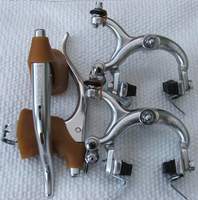
There are later models, the CX and the Model 77 that both have a more streamlined lever than previous models, the former sometimes has cut-outs at the side to make them lighter and the latter has slots at the front of the lever. Both have short reach callipers that reflect changes in bicycle frame design.
The CX makes its first appearance in 1976 alongside the 51,61and 68 models. The Model 77 appears in the 1981 Holdsworthy catalogue to the exclusion of all previous models. The CX cost £41-00p, the 77 cost £33-95p and weighed just 200grams. However, they were cheap compared with the Campagnolo Super Record brakeset that cost £61-83p in 1976.
LEVERS
The last model to be produced was the AER-LAI brakeset introduced in 1985. A more aerodynamic look to the calliper and came with a lever similar to the CX or a more radical designed aero lever as an alternative, it proved to be the end of the road for Universal and did not catch on.
Thanks go to Tony Beckett, Graham Brice, Mervyn Cook and Peter Underwood for providing valuable information for this article. Updated March 2007.
If you have anything to add to this information please send it to Peter Underwood.
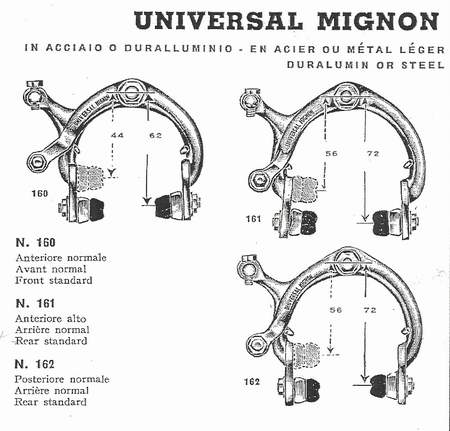

The Mignon Model was the cheapest model on Bowles list at 32 shillings and probably came with a lever engraved at the sides but no adjusting pillar. The callipers were different lengths like other models and engraved with ‘UNIVERSAL MIGNON’ on the left side of the pivot bolt according to the Universal catalogue. It also had a wrap around return spring
Posted: Sunday 14th June 2020
This article appears in the following categories.
Upcoming Events
Whether you are looking for a gentle social meet up, or a 100-mile ride browse the community’s upcoming events and plan your next weekend outing.
